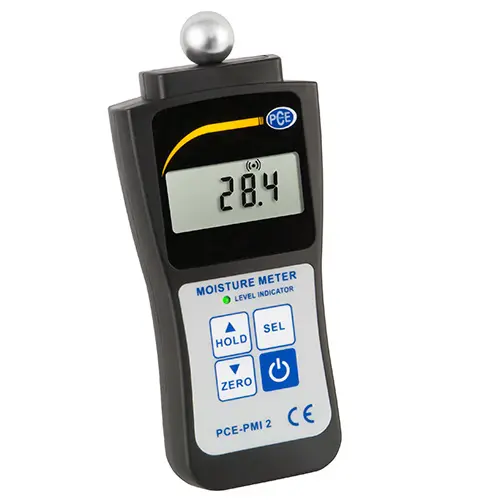Moisture Meter Purchasing Overview: What to Seek in High-Quality Instruments
Moisture Meter Purchasing Overview: What to Seek in High-Quality Instruments
Blog Article
Comprehending the Significance of a Moisture Meter in Preventing Mold and Water Damages in Your Home
In the realm of home upkeep, the existence of dampness can commonly be a silent yet powerful adversary, qualified of creating prevalent mold growth and dangerous water damage if left uncontrolled. In the middle of the tranquil atmosphere of a residence, concealed moisture concerns can brew under the surface area, posing a danger to both building and health. Outfitted with the right devices and understanding, homeowners can proactively battle these potential threats. Recognizing the significance of a wetness meter in this fight is not just an option however a strategic requirement.
Importance of Moisture Detection
Effective wetness detection techniques are critical for safeguarding buildings and protecting against possible mold and mildew development and water damages. Wetness can leak right into numerous structure products, resulting in architectural problems and health and wellness threats. By utilizing a wetness meter, residential property proprietors can proactively determine locations susceptible to excess wetness, enabling for timely treatment and mitigation techniques.
Moisture meters offer accurate readings of moisture degrees in different materials such as wood, concrete, and drywall. This data helps in pinpointing locations of problem, also in concealed or hard-to-reach places. Early discovery of dampness build-up enables punctual repair services or changes to stop additional damages.

Exactly How Moisture Meters Job
Wetness meters play a critical role in the proactive recognition of excess moisture, assisting in the prevention of prospective mold and mildew growth and water damages by supplying precise readings of moisture degrees in various building materials. These tools work based upon different concepts, relying on their type. Moisture Meter. Pin-type dampness meters, as an example, have 2 pins that pass through the material to determine the electrical resistance between them. When wetness is present, it boosts the material's conductivity, bring about a lower resistance reading. Pinless wetness meters, on the various other hand, use electro-magnetic sensors to check the material without triggering damages. These sensors discharge electro-magnetic signals that penetrate the product and gauge the dielectric homes, suggesting dampness content. Some advanced dampness meters combine both pin and pinless modern technologies for comprehensive dampness detection. Comprehending just how moisture meters feature is necessary for accurate and timely dampness level evaluations, enabling reliable safety nets against mold and water damage.
Finding Early Indication
Upon first examination of a building, identifying refined indications of excess dampness ends up being vital in the early detection of prospective mold growth and water damages. Some typical early warning indications include musty odors, water discolorations on wall surfaces or ceilings, peeling off paint or wallpaper, and distorted or stained surfaces. Stuffy odors commonly show the existence of mold and mildew or mold, even if no visible signs appear. Water spots can signal leakages or seepage, while peeling paint or wallpaper may be a result of dampness compromising the attachment of these materials to the surface area. Distorted or stained surfaces, such as distorting floorboards or stained drywall, are clear indicators of water damage. Furthermore, an increase in allergy symptoms or breathing issues original site amongst passengers might suggest the visibility of mold due to excess wetness. By promptly determining and addressing these very early indication, property owners can minimize the risk of comprehensive mold development and water damage in their residential properties.
Preventing Mold Growth
Acknowledging very early indication of excess wetness within a building not just enables prompt discovery of prospective mold growth and water damage but additionally functions as a positive step in stopping the expansion of mold. To properly stop mold growth, it is essential to address any kind of sources of moisture promptly. This can consist of taking care of leaks in windows, pipes, or roof coverings, guaranteeing proper air flow in damp locations like restrooms and kitchens, and using dehumidifiers in high-humidity areas. Consistently evaluating and maintaining the property's plumbing, roof covering, and gutters can likewise aid in protecting against water invasion that can lead to mold development.
Monitoring moisture degrees in areas susceptible to moisture, such as cellars and creep areas, making use of a This Site dampness meter can likewise help in very early detection of elevated moisture levels and potential mold and mildew growth - Moisture Meter. By taking aggressive procedures to stop excess moisture and mold and mildew development, homeowners can safeguard their property and interior air quality.
Advantages of Normal Surveillance
Regular monitoring of wetness degrees in a home can play a critical duty in maintaining a healthy indoor atmosphere and stopping potential mold and water damage. By consistently checking moisture degrees, home owners can identify any kind of issues without delay and take needed activities to protect against mold and mildew development and water damages.
Additionally, regular anonymous surveillance enables property owners to track patterns and patterns in moisture degrees over time. Ultimately, the regular surveillance of moisture levels encourages property owners to shield their building, secure their health and wellness, and preserve the stability of their interior atmosphere.

Conclusion

By utilizing a dampness meter, residential or commercial property proprietors can proactively recognize locations susceptible to excess dampness, enabling for prompt treatment and reduction strategies.

Monitoring moisture levels in areas vulnerable to wetness, such as basements and crawl areas, using a moisture meter can also help in very early detection of elevated moisture degrees and prospective mold and mildew development. (Moisture Meter)
Report this page